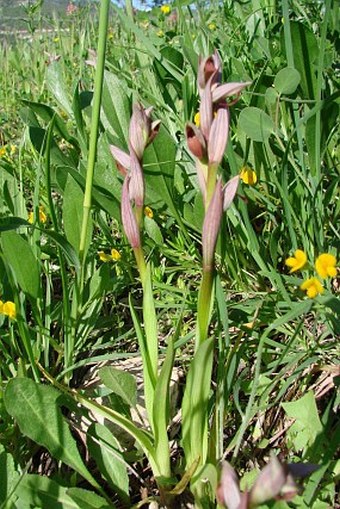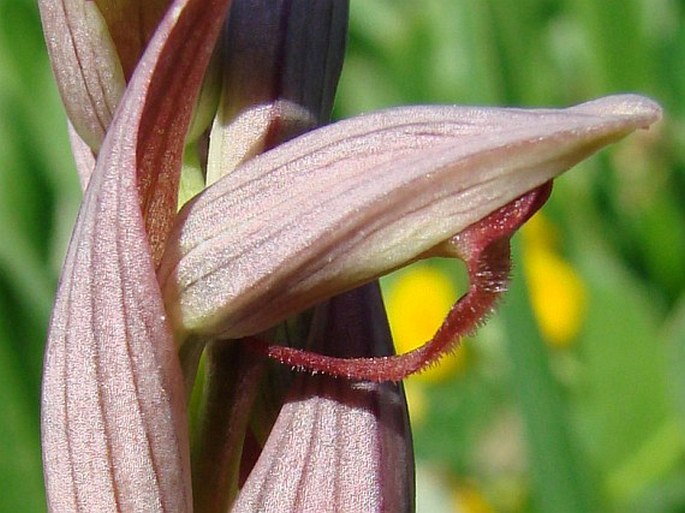Syn.: Serapias laxiflora var. parviflora (Parl.) Rchb. f., Serapias occultata J. Gay ex Cavalier, Serapiastrum parviflorum (Parl.) A. A. Eaton
Family: Orchidaceae Juss.

Distribution: The species is found in the Mediterranean region (eastward to Cyprus), Macaronesia (the Azores and Canary Islands) and sparsely along the Atlantic coast of France (northward to Brittany). It was probably accidentally or deliberately introduced to Britain (Cornwall).
Ecology: It grows on bushy hillsides, pastures, in macchia and garrigue, forest margins, in alkaline or slightly acid soils, up to an elevation of 1000 m asl. It blooms from April to May.
Description: Perennial herbs, with 2(–3) tubers. Stem erect, 10–30 cm tall. Leaves (4–6) narrowly lanceolate, to 10 cm long and 1 cm wide, entire. Inflorescence 3–6(–12)-flowered; bracts equalling or slightly exceeding flowers, red to reddish-green, usually with dark purple veins; flowers 15–20 mm, outer perianth-segments linear-lanceolate, acute, lilac, inner lateral ovate-lanceolate, greenish or reddish, labellum about as long as the other segments, with 2 ridges at base, brownish-red, lateral lobes rounded, sometimes erect, partly hidden by galea; epichile lanceolate, acute, narrower than hypochile, brownish-red, rarely white. The fruit is a capsule.
Threat and protection: The Small-flowered Serapias is protected by the CITES agreement, and protected by law in France.




These images were taken in Italy, Gargano, Monte Scappone (April 18, 2008).


